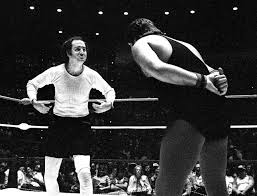Some schlemiel theorists like Ruth Wisse and Sidra DeKoven Ezrahi read comedy as a kind of compensation for failure and powerlessness. Comedic language, in this scenario, is a kind of prosthesis. The feverish pace of comedy is, in this scenario, structured to give the writer, joke-teller, and audience a false – read fictional – sense of control.
Reflecting on the excessive use of language in Sholem Aleichem’s schlemiel-comedy, Ruth Wisse writes:
Sholem Aleichem generally employs the technique of monologue, of which the epistolary form is but a variation, to convey the rhythms and nuances of character, and to underscore the extent to which language itself is the schlemiel’s manipulative tool. Through language the schlemiel reinterprets events to conform to his own vision, and thereby controls them, much as the child learns to control the environment by naming it. One need only read Menachem Mendl’s joyous, and incomprehensible, explanation of the stock market to appreciate how proficient handling of language can become a substitute for proficient commerce. Moreover, the richness of language in some way compensates for the poverty it describes. There is in the style an overabundance of nouns, saying, explanations, and apposition….The exuberant self-indulgence of…description takes the sting out of failure itself….Maurice Samuel called…it “theoretical reversal.” (54)
In this scenario, all comic language is ironic as is the laughter that goes along with it since, in this view, everyone goes along with the joke. Nonetheless, we know what the schlemiel is doing. He is, as it were, not fully absent minded. And, as Wisse suggests, the schlemiel uses language like a “manipulative tool” so as to reinterpret events and things that they cannot master so that they can “conform to his own vision.”
Writing on the telephone as a prosthesis, Avital Ronell argues that it is “capable of surviving the body which it in part replaces” and it “acts as a commemorative monument to the dissolution of the mortal coil”(88, The Telephone Book). Playing on Freud, Ronell goes on to call the prosthesis a “godlike annexation of a constitutively fragile organ.” It performs a “restitutional service” by going right to where the trauma touches the body.
Ronell argues that Freud anticipates Marshall McLuhan who argues that if the body fails the prosthesis succeeds. However, for McLuhan, the prosthesis is not simply a substitute for a weak or “fragile organ.” It is an extention of our existing organs. Citing McLuhan, Ronell notes that for him the prosthesis will no longer be a buffer between the body and the world. It will directly relate to it. In other words, it is no longer a substitute and it no longer is false. And now when it is shocked or traumatized there is an “auto-amputation of the self.”
Ronell contrasts this new understanding of trauma mediated by a prosthesis which now becomes “real” to Freud who argues that the enjoyment of this false limb amounts to a “cheap thrill.”
Bringing all this together, I’d like to test out the prosthetic theory of humor posited by Wisse, above. If humor is a prosthesis, than wouldn’t our enjoyment of it be, in Freud’s words, cheap? Perhaps this suggests that the schlemiel is understood as a prosthesis and that our “ironic victory” is…ironic. Without that understanding, our laughter would in fact be cheap.
On the other hand, if we read prosthetic humor along the lines of McLuhan there is no false limb. It is not a tool so much as an extention of our bodies. If that is the case, humor – as an extention of our bodies – exposes us to existence. It doesn’t protect us and it can potentially harm the schlemiel. This insight, to my mind, bears some interesting fruit. We see the effects of this more in stand-up comedy than in Yiddish literature. While Sholem Aleichem’s Motl or Mendel Mocher Sforim’s Benjamin seem to be immune to existence – by way of their humor – stand-up comedians and some contemporary schlemiel characters, like Philip Roth’s Portnoy or Shalom Auslander’s Kugel are not. Sometimes language can provide us with an ironic victory othertimes the same words can signify, for a schlemiel, defeat.
It all depends on how you read the prosthesis for sometimes the substitution afforded by comedy doesn’t compensate for lack so much as expose us to excess.
I’ll leave you with a clip from Andy Kaufmann since his comic words and his gestures seem to expose him rather than protect him from failure.



